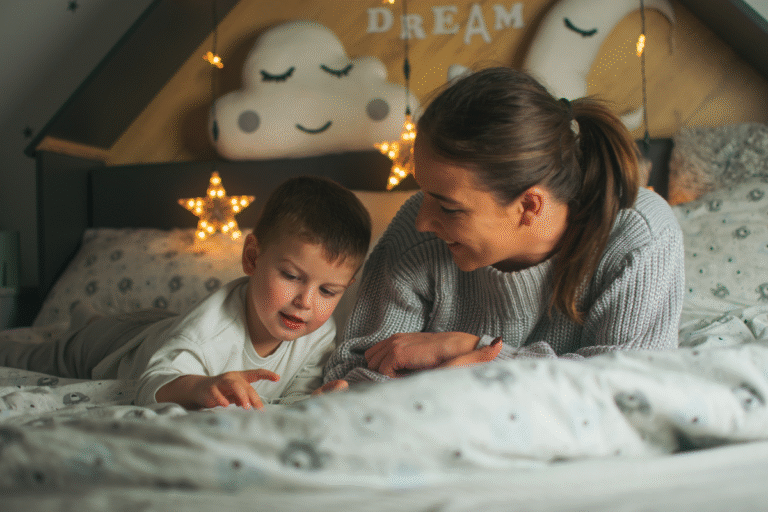
Autumn means lots of wonderful things and it’s a season we LOVE at Sandytots. Crunching through piles of leaves, spotting pumpkins, collecting conkers, and putting on our wellies for puddle jumping – there’s so much for little ones to enjoy! We’ve even been keeping an eye out for hedgehogs, who, just like us, notice the shorter days and start preparing for their long winter sleep.
While autumn feels magical, the shift to darker evenings and shorter days can sometimes make routines tricky for young children. But just like hedgehogs naturally adapt their sleep as the season changes, we can help little ones adjust with small, comforting steps.
Let’s explore how autumn routines can help children transition into shorter days.
Make the Most of Natural Light
Daylight is one of the most powerful tools for helping children’s body clocks stay on track. According to the Sleep Foundation, light is the most important external factor affecting sleep because it regulates our circadian rhythm – the internal clock that tells us when to be alert and when to rest. Light also controls the production of melatonin, the hormone that helps us feel sleepy.
That’s why getting outside in the morning, even for just a short time, is so valuable. Whether it’s a leaf hunt, a puddle splash, or simply walking to nursery, natural light helps children feel more awake in the day and makes it easier for them to rest at night. If the weather keeps you indoors, opening curtains wide and making the house bright can have a similar effect.
Bright Light Matters for Little Sleepers
Just as morning light helps us wake up, evening light plays a big role in how easily children settle at bedtime.
Daniel Lewin, PhD, former associate director of sleep medicine at Children’s National Hospital, recommends dimming the lights in your child’s bedroom and turning off electronics 30–60 minutes before bedtime. Screens and bright lights not only reduce sleep quality, but they also stimulate the brain, making it harder for little ones to wind down.
Create a Cosy Evening Routine
Autumn evenings lend themselves to calming rituals. Warm baths, soft pyjamas, dimmed lights, and a shared story under a blanket all give children clear cues that bedtime is near. Just as hedgehogs respond to shorter days by slowing down and finding a safe, snug place to rest, children also benefit from routines that make them feel secure and ready for sleep.
Handling the Time Change: Gradual Adjustments Are Key
One of the trickiest parts of autumn is the clock change. Suddenly, evenings are darker and mornings can feel earlier than expected – which can throw off children’s body clocks.
Instead of making an abrupt shift, gradual adjustments work best:
- Begin moving your child’s bedtime and wake-up times by 10-15 minutes each day in the run-up to the clock change.
- If possible, start about a week before the change, so your child has time to adapt naturally.
- Use light exposure in the early evening to signal it’s not quite bedtime yet.
- Keep mornings darker with blackout shades, so little ones don’t rise before you’re ready.
This gentle approach helps children’s bodies adjust smoothly, reducing bedtime battles and early-morning wakeups.
Autumn gives children so many joyful experiences – from leaf crunching to pumpkin spotting – but it’s also a season of change. By keeping routines calm and consistent, and drawing on the cosy rhythms of the season, you can help your little one adjust as the days grow shorter.







